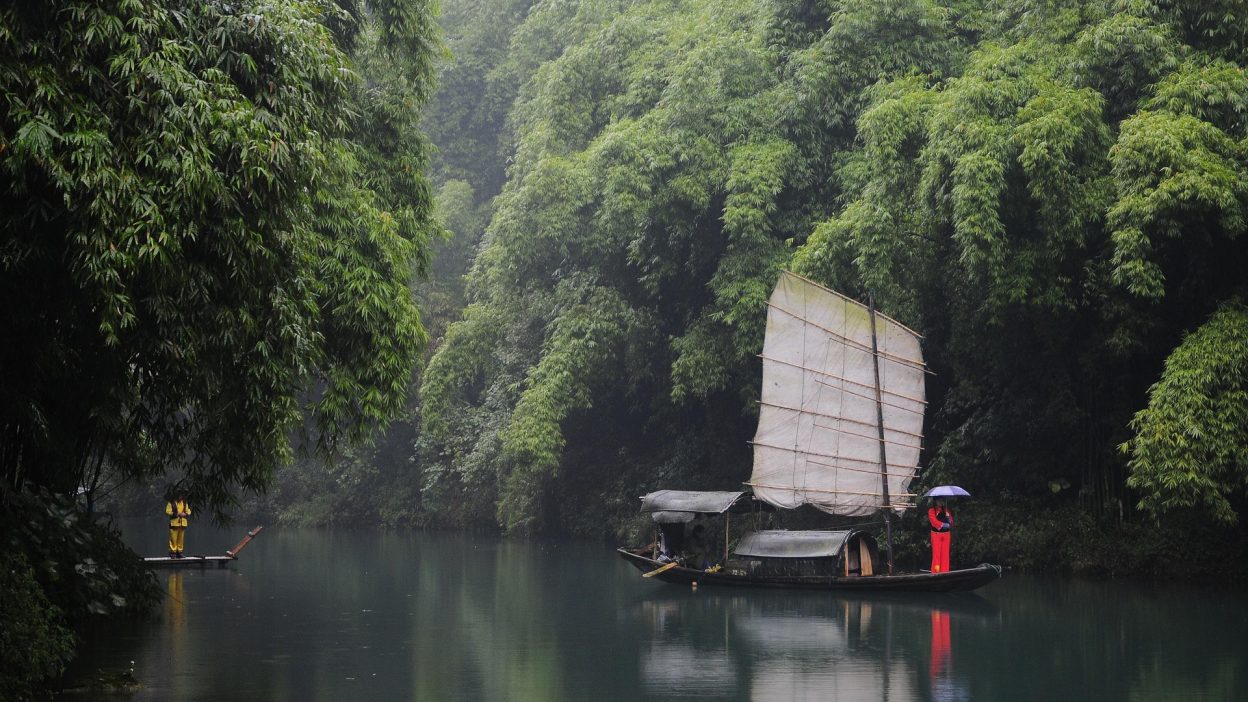A Catastrophic Event That Changed Everything
The 1935 Yangtze Flood remains one of the deadliest and most catastrophic natural disasters in China’s history. The devastating flood swept through central China, causing unimaginable destruction and displacing millions of people. The tragedy raises an important question: could this disaster have been averted? The flood took place in a region already highly susceptible to heavy rainfall, yet the lack of effective flood control measures exacerbated the disaster. At the same time, political instability and subpar infrastructure hindered the government’s ability to react promptly.
The failure of flood protection systems, such as dikes and levees, was one of the main contributors to the severity of the flood. These structures were not only poorly maintained but also outdated. When the Yangtze River swelled beyond its banks, there was no defence to hold the water back, leading to the widespread destruction of communities. If modern flood management systems had been in place, the extent of the disaster could have been significantly reduced, and thousands of lives could have been saved.
The Hidden Horror: How the 1935 Yangtze Flood Engulfed Entire Regions
The 1935 Yangtze Flood submerged vast swathes of land, drowning entire villages and towns. Thousands of homes were lost, along with essential infrastructure, such as roads and bridges. The sheer scale of the devastation was overwhelming, with whole regions left unrecognisable. People fled for their lives, only to be met with the rising waters, which relentlessly swept away everything in their path.
The economic consequences were equally devastating. The destruction of agricultural land severely impacted China’s economy, particularly the farming communities that relied on the crops for their survival. This loss of farmland led to food shortages and a sharp increase in food prices. The flood also disrupted trade and transportation, causing a ripple effect that hampered economic activities for years.
The Human Cost: Lives Lost, Injuries, and the Aftermath of the 1935 Yangtze Flood
- Casualties and fatalities: The estimated death toll from the 1935 Yangtze Flood stands at around 145,000, though some reports suggest the number could be higher. Thousands more were injured, suffering from broken bones, injuries caused by debris, and various other traumatic events during the disaster.
- Displacement and suffering: Over 5 million people were forced to leave their homes, with many left homeless and struggling to survive in overcrowded refugee camps. People who had once lived comfortably found themselves living in squalid conditions, with food, clean water, and medical supplies in short supply.
- Economic devastation: The economic toll was colossal. In addition to the loss of crops, there was widespread damage to homes, businesses, and infrastructure, which delayed recovery for years. The damage to local industries and trade routes created a prolonged economic crisis for the affected areas.
Aftermath and Long-Term Impacts: How the 1935 Yangtze Flood Shaped China’s Future
The devastating flood of 1935 left a permanent mark on China, not only in terms of the physical destruction it caused but also in how it changed the country’s approach to disaster management. The tragedy highlighted the inadequacy of the existing flood control measures and the urgent need for better infrastructure to prevent future disasters. It became a catalyst for the reform of China’s flood management systems, which would go on to shape how the country responded to subsequent floods.
In the years following the flood, the affected regions struggled to recover. The devastation caused by the flood left families in poverty, many without homes or livelihoods. People who once worked in agriculture were displaced, and many had to move to cities in search of work. This migration had lasting effects on urbanisation and contributed to China’s industrialisation in the decades that followed.
What Went Wrong? Why Did the Government Fail to Prevent the 1935 Yangtze Flood?
- Corruption and misallocation of funds: A key factor that contributed to the extent of the disaster was widespread corruption within the government. Resources that were supposed to be used for flood protection were often misused, leaving flood control measures poorly funded and inadequately maintained. This misallocation of funds exacerbated the situation when the floodwaters surged.
- Outdated flood management systems: The flood control structures in place at the time were inadequate and outdated. The levees and dikes were not constructed properly, and they failed when the river reached dangerous levels. With no effective protection, the flood wreaked havoc across the region.
- Governmental delay in response: The political instability of China during the 1930s meant that the response to the flood was disorganised and delayed. The government was slow to mobilise resources and assist the victims. Had the response been more timely and organised, many lives could have been saved.
Media Silence: What Was Hidden from the Public About the 1935 Yangtze Flood?
Following the 1935 Yangtze Flood, the media’s portrayal of the disaster downplayed some of the most significant aspects of the tragedy. While the flood’s destruction was acknowledged, the real human cost was underreported. The media failed to highlight the massive loss of life, the sufferings of the displaced, and the profound social upheaval that followed.
The media also played a role in protecting the reputation of the government. The failure to address the country’s inadequate flood management systems and the slow response was largely ignored in public reports. This lack of transparency hindered the push for reform, allowing the root causes of the disaster to remain unaddressed for years.
The 1935 Yangtze Flood: Was This a Call for Change in China’s Infrastructure?
The 1935 Yangtze Flood served as a grim reminder that China’s flood protection systems were outdated and ineffective. The flood highlighted the urgent need for better infrastructure to prevent future disasters. Following the tragedy, China’s government made efforts to modernise flood control systems, though progress was slow.
Despite recognising the need for better infrastructure, political instability and financial constraints prevented the government from taking swift action. It wasn’t until subsequent floods hit that the government made more serious efforts to upgrade and modernise flood control systems. The lessons learned from the 1935 flood paved the way for these improvements.
The 1935 Yangtze Flood: A Critical Wake-Up Call That Came Too Late
By the time the Yangtze River flooded in 1935, there were already clear signs that disaster was imminent. Several years of excessive rainfall had left the region vulnerable to flooding, yet these warnings were largely ignored. When the river finally breached its banks, the resulting devastation could have been prevented had more proactive measures been taken.
This delayed reaction and lack of preparedness are what make the 1935 Yangtze Flood so tragic. With the right precautions in place, thousands of lives could have been spared, and the economic toll could have been minimised. The flood remains a painful reminder of how ignoring nature’s warning signs can lead to catastrophe.
Conclusion: How the 1935 Yangtze Flood Altered China’s Approach to Disaster Management
The impact of the 1935 Yangtze Flood was far-reaching, not only in terms of the immediate damage but also in how it forced China to rethink its disaster response. The failure to control the flood highlighted critical flaws in the country’s infrastructure, leading to the eventual implementation of reforms aimed at improving flood management.
In the decades that followed, China invested heavily in flood control and disaster management systems. The lessons from 1935 played a crucial role in shaping the country’s disaster preparedness, ensuring that future floods would be met with a more organised and effective response. Though the flood was a terrible tragedy, it ultimately led to positive changes in China’s infrastructure.
5 Short FAQs:
- How many people died in the 1935 Yangtze Flood?
- The death toll was estimated at around 145,000, with thousands more injured or displaced.
- What caused the 1935 Yangtze Flood?
- Excessive rainfall and outdated flood control measures led to the river’s overflow, causing widespread devastation.
- How did the Chinese government respond to the flood?
- The government’s response was slow and ineffective, with delayed relief efforts contributing to the disaster’s severity.
- What were the long-term effects of the Yangtze Flood?
- The flood caused displacement, economic loss, and significant changes to China’s infrastructure and disaster management.
- Could the 1935 Yangtze Flood have been prevented?
- With modern flood protection measures and faster government response, the flood’s impact could have been mitigated.
References:
“1935 Yangtze flood”
Yangtze River floods
“The Catastrophic 1935 Floods of China’s Yangtze and Yellow Rivers
The Historic Power of the 1935 Yangtze River Floods




